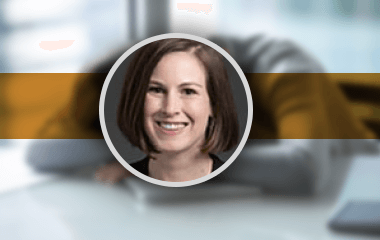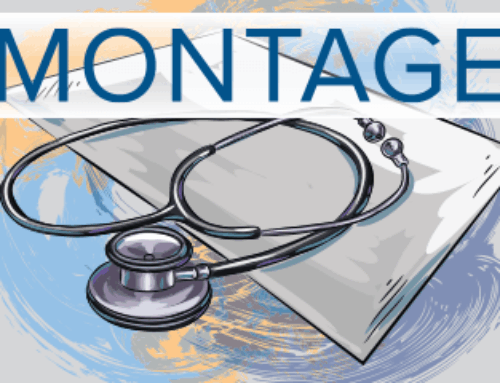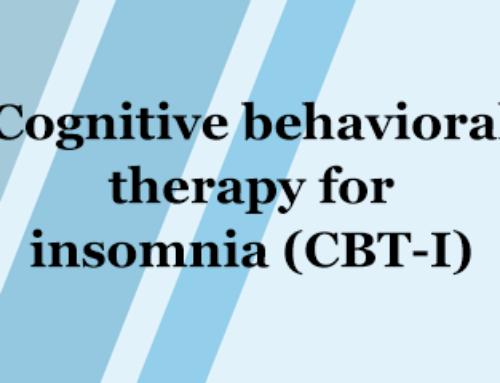Lindsay McCullough, MD
Most people are surprised to hear that I have narcolepsy. An invisible diagnosis, narcolepsy causes many to struggle to cope with the symptoms without knowing they have the condition. Others walk in silence for fear of being judged. In hindsight, I can identify symptoms starting as early as 2004, 10 years before I was diagnosed. My determination to succeed helped me overcome my sleepiness until September 2013, soon after I began my clinical rotations. I would come home and take two-hour naps, only to eat dinner and go back to bed for another eight hours. I remember struggling to stay awake while driving, rolling the windows down, blaring Mumford and Sons and pinching myself to stay alert. My eyes fluttered as I presented my patients on rounds, and I was dozing off mid-conversation with patients. I knew I needed help.
Initially diagnosed with depression, I tried multiple medications and therapy without improvement. I asked my PCP for a trial of a stimulant medication to see if this would help. She agreed, with the condition that I would see psychiatry or sleep medicine for evaluation.
My sleep physician, Dr. Rich Berry, was incredibly kind and supportive from our first meeting. On Nov. 20, 2014, I was diagnosed with narcolepsy type 2. After delivering my diagnosis, Dr. Berry discussed the importance of adequate sleep, resumed my stimulant medication, and gave me information about the Narcolepsy Network.
My initial relief upon learning there was a reason for my symptoms was immediately followed by loneliness, shame, and sadness. I was a fourth-year medical student, wrapping up interviews for residency, and questioning my ability to continue a career in medicine. My fear of potentially harming patients was overwhelming. I feared being seen differently and incapable of being a physician despite everything I had accomplished so far.
Over the past eight years, I have tried multiple medications with varying success. With lots of trial and error, I’ve learned there is no one-size-fits-all approach to managing narcolepsy symptoms, and treatment response can change over time and varies from person to person. I believe there are four essential components to narcolepsy treatment: medications, lifestyle adjustments, naps, and social support.
Throughout my training, I was in survival mode. I stayed in close contact with my sleep specialist, adjusting my stimulant medications and trying to get as much sleep as possible. Despite this, I was still a zombie, getting on the wrong train for work and dozing in the middle of conversations.
While I struggled every day, I was also gaining insight that led me in a new and exciting direction. I created a sleep medicine elective and was energized by the connection I could make with patients. I sympathized with their degree of sleepiness, and we celebrated together when their symptoms improved or resolved with therapy. Sleep medicine is also a field that allows for self-care and adequate sleep, which would be instrumental in my ability to practice medicine sustainably.
Though daytime medications were helpful, my whole world changed when I started sodium oxybate in 2018, four years after my diagnosis. I felt like my eyes were opened for the first time. My physicians and I were hesitant to start such a powerful medication with significant side effects. I was also afraid of how it would impact my social life and my relationships. I can attest that the benefits have strongly outweighed the side effects I experience. My family could not believe my transformation and told me they thought I was just withdrawn and depressed before. They now saw that I was just extremely sleepy.
One of the hardest parts of being diagnosed with narcolepsy is feeling isolated and alone. Connections came in bits and pieces. I met one narcolepsy patient during a sleep medicine rotation nearly three years after my diagnosis. I eventually stumbled upon Julie Flygare’s memoir, “Wide Awake and Dreaming.” Reading Julie’s book, I felt understood for the first time. Julie was diagnosed with narcolepsy while in law school; her experiences seemed to parallel mine and opened my eyes to symptoms that I did not recognize for years. Five years after my diagnosis, I bumped into Julie while presenting my poster at SLEEP 2019. Completely in shock, I burst into tears. I told her how much her book meant to me and how it let me know I was not alone.
After meeting Julie at the SLEEP conference (and signing a contract for my first attending job), I felt compelled to tell my story. I participated in Project Sleep’s “Health Care Providers with Narcolepsy Series” and was interviewed about my experience. Comments flooded in from students who were encouraged by my story and given hope that they could make it.
I currently practice and teach sleep medicine in Chicago at Rush University Medical Center. I am lucky to be surrounded by supportive colleagues who encourage me to take breaks when needed. I enjoy teaching, with hopes that trainees may identify sleep disorders in their patients or have the courage to speak up if they are having sleep issues themselves. For all of my patients with hypersomnia, I prescribe social support at the same time as medications. Organizations such as Project Sleep, the Hypersomnia Foundation, Narcolepsy Network, and Wake Up Narcolepsy help patients find community and resources, even if they do not meet anyone in person with their condition for years. I am grateful for my family, my doctors, my colleagues, my narcolepsy community, and the researchers who make it possible for me to live my best life and embrace my career in sleep medicine.
Dr. Lindsay McCullough is an assistant professor of sleep medicine and associate program director of the sleep medicine fellowship at Rush University Medical Center in Chicago.
This article appeared in the Fall 2022 issue of Montage, volume 7, number 4. To read more content from this issue, click the button below!





